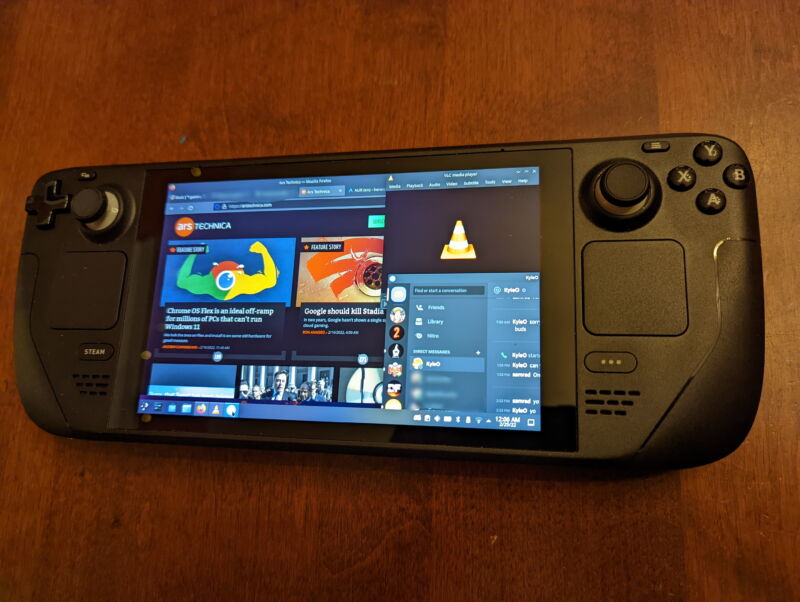
Enlarge / Linux on a Steam Deck! Let's dive in. (credit: Sam Machkovech)
Our Steam Deck review is now live, and it's massive—almost as big as Valve's new portable PC. With that in mind, I decided to write a shorter article about the Steam Deck's implementation of Linux since a lot of Ars Technica readers are interested in that use case.
Our full review goes into greater detail about installing and playing Windows games through Valve's customized Wine compatibility layer, dubbed Steam Proton. This is the default way to access your favorite Steam games, and as our review explores, that proposition is currently iffy. But that's not the same as using the Deck as a Linux machine. In this companion article, we'll explain what's going on with Valve's first dedicated Linux PC and what it currently can (and cannot) do.
Donating some Plasma knowledge
As Ars Technica reported last year, the Steam Deck runs on a customized fork of Arch Linux. SteamOS is basically a GUI wrapper that runs on top of Arch Linux, and visually, it splits the difference between Steam's "Big Picture Mode" and the controller-friendly menus of the Nintendo Switch. If you want to use the Deck primarily as a gaming machine, with access to common Steam features like friends lists, notifications, achievements, and forums, SteamOS delivers. Many of its pages work natively with the Steam Deck's buttons and joysticks, but some run inside a web browser and can only be manipulated by swiping and tapping the Deck's screen.
Read 20 remaining paragraphs | Comments
